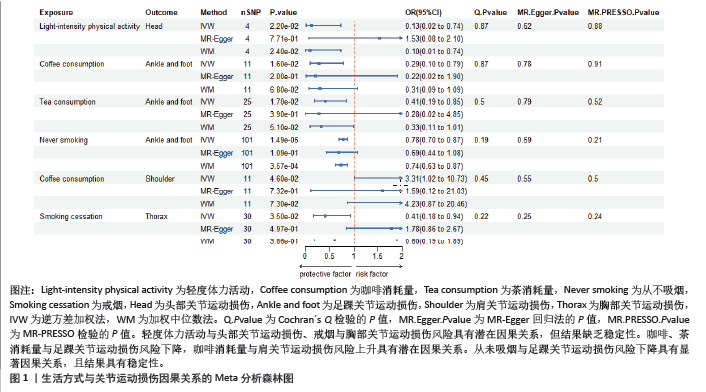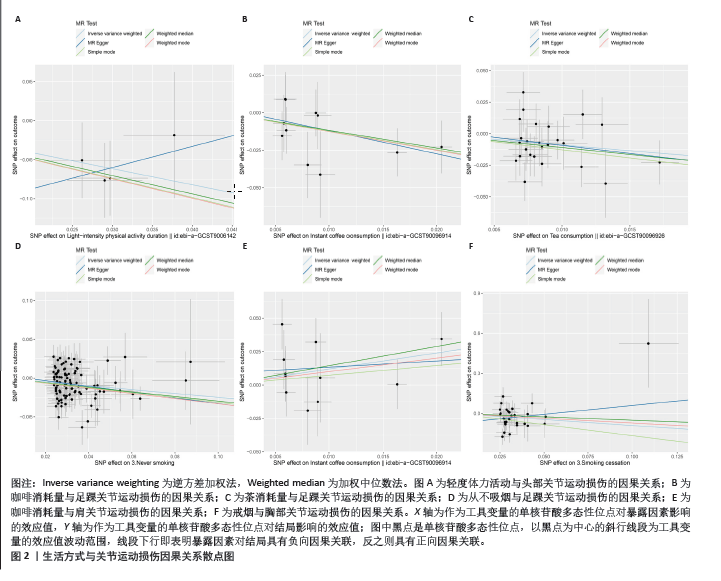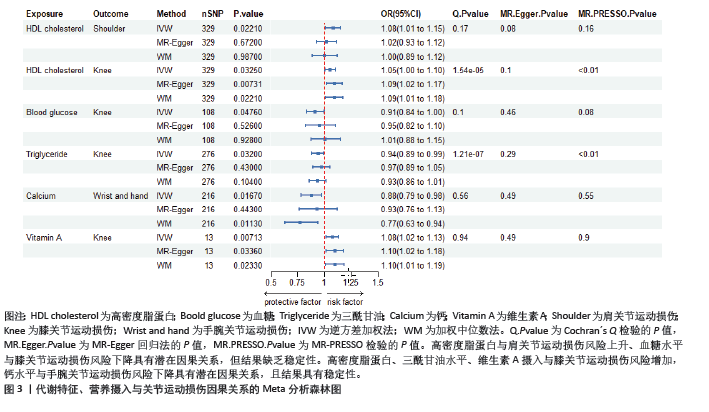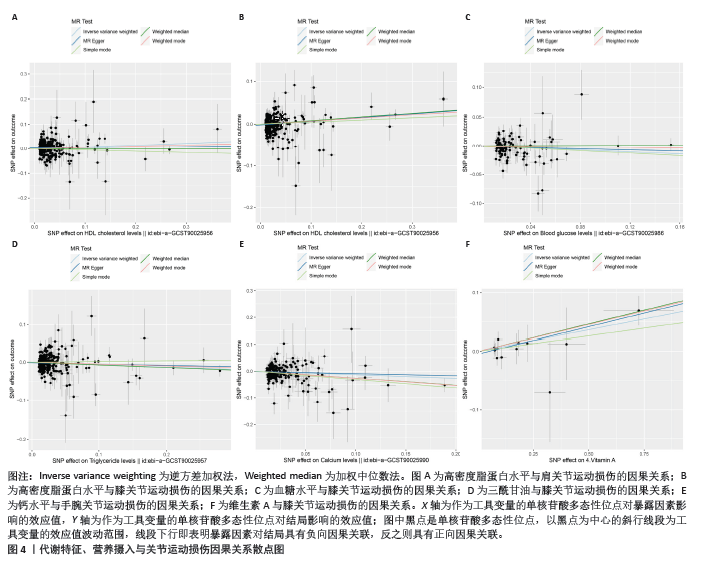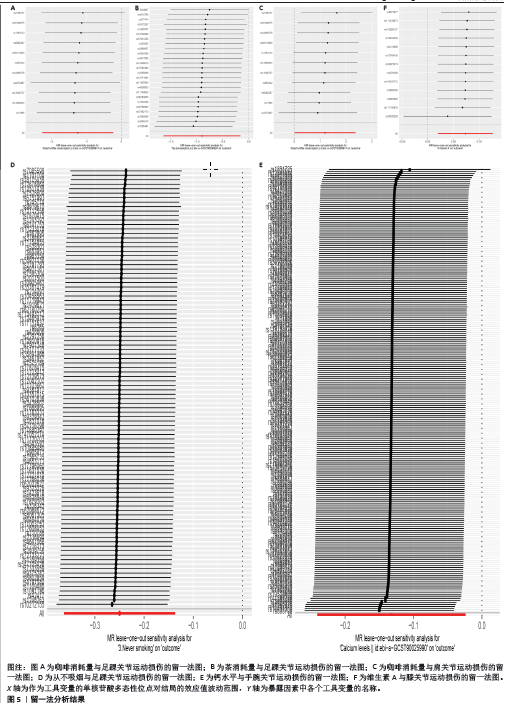[1] OJA L, PIKSÖÖT J. Physical activity and sports participation among adolescents: associations with sports-related knowledge and attitudes. Int J Environ Res Public Health. 2022;19(10):1-8.
[2] RUI P, ASHMAN JJ, AKINSEYE A. Emergency department visits for injuries sustained during sports and recreational activities by patients aged 5-24 years. 2010-2016. Natl Health Stat Report. 2019;(133):1-15.
[3] MIGLIORINI F, MAFFULLI N, PINTORE A, et al. Osteoarthritis risks and sports: an evidence-based systematic review. Sports Med Arthrosc. 2022;30(3):118-140.
[4] HUANG K, IHM J. Sleep and injury risk. Curr Sports Med Rep. 2021;20(6):286-290.
[5] ARDELJAN A, PALMER J, DRAWBERT H, et al. Partial thickness rotator cuff tears: patient demographics and surgical trends within a large insurance database. J Orthop. 2020;17:158-161.
[6] HALLIDAY TM, PETERSON NJ, THOMAS JJ, et al. Vitamin D status relative to diet, lifestyle, injury, and illness in college athletes. Med Sci Sports Exerc. 2011; 43(2):335-343.
[7] 陈天鑫,董婷婷,李妍,等.孟德尔随机化分析血液代谢物与肌少症相关特征的因果关系[J].中国组织工程研究, 2024,28(27):4288-4292.
[8] BI W, YANG M, JIANG C. Causal effect of body mass index and physical activity on the risk of joint sports injuries: Mendelian randomization analysis in the European population. J Orthop Surg Res. 2023;18(1):676.
[9] WANG Y, ZHANG Y, ZHAO C, et al. Physical activity, sedentary behavior, and osteoarthritis: a two-sample mendelian randomization analysis. Iran J Public Health. 2023;52(10):2099-2108.
[10] SUN Y, CAO X, CAO D, et al. Genetic estimation of correlations and causalities between multifaceted modifiable factors and gastro-oesophageal reflux disease. Front Nutr. 2022;9:1009122.
[11] KURKI MI, KARJALAINEN J, PALTA P, et al. FinnGen provides genetic insights from a well-phenotyped isolated population. Nature. 2023;613(7944):508-518.
[12] JIANG L, ZHENG Z, FANG H, et al. A generalized linear mixed model association tool for biobank-scale data. Nat Genet. 2021;53(11):1616-1621.
[13] BUCHWALD J, CHENOWETH MJ, PALVIAINEN T, et al. Genome-wide association meta-analysis of nicotine metabolism and cigarette consumption measures in smokers of European descent. Mol Psychiatry. 2021; 26(6):2212-2223.
[14] WANG Z, EMMERICH A, PILLON NJ, et al. Genome-wide association analyses of physical activity and sedentary behavior provide insights into underlying mechanisms and roles in disease prevention. Nat Genet. 2022;54(9): 1332-1344.
[15] QI G, DUTTA D, LEROUX A, et al. Genome-wide association studies of 27 accelerometry-derived physical activity measurements identified novel loci and genetic mechanisms. Genet Epidemiol. 2022;46(2):122-138.
[16] DASHTI HS, JONES SE, WOOD AR, et al. Genome-wide association study identifies genetic loci for self-reported habitual sleep duration supported by accelerometer-derived estimates. Nat Commun. 2019; 10(1):1100.
[17] JONES SE, LANE JM, WOOD AR, et al. Genome-wide association analyses of chronotype in 697,828 individuals provides insights into circadian rhythms. Nat Commun. 2019;10(1):343.
[18] SCHOELER T, SPEED D, PORCU E, et al. Participation bias in the UK Biobank distorts genetic associations and downstream analyses. Nat Hum Behav. 2023;7(7): 1216-1227.
[19] PIRASTU N, MCDONNELL C, GRZESZKOWIAK EJ, et al. Using genetic variation to disentangle the complex relationship between food intake and health outcomes. PLoS Genet. 2022;18(6): e1010162.
[20] DÖNERTAS HM, FABIAN DK, VALENZUELA MF, et al. Common genetic associations between age-related diseases. Nat Aging. 2021;1(4):400-412.
[21] BARTON AR, SHERMAN MA, MUKAMEL RE, et al. Whole-exome imputation within UK Biobank powers rare coding variant association and fine-mapping analyses. Nat Genet. 2021;53(8):1260-1269.
[22] MBATCHOU J, BARNARD L, BACKMAN J, et al. Computationally efficient whole-genome regression for quantitative and binary traits. Nat Genet. 2021;53(7): 1097-1103.
[23] EMDIN CA, KHERA AV, KATHIRESAN S. Mendelian randomization. JAMA. 2017; 318(19):1925-1926.
[24] YU N, QI H, GUO Y, et al. Associations between rheumatoid arthritis and skin cancer: a bidirectional two-sample Mendelian randomization study. J Am Acad Dermatol. 2024;90(1):198-200.
[25] DUAN L, XIAO R, LIU S, et al. Causality between cognitive performance and cardiovascular disease: a bidirectional Mendelian randomization study. Gene. 2024;891:147822.
[26] MOUNIER N, KUTALIK Z. Bias correction for inverse variance weighting Mendelian randomization. Genet Epidemiol. 2023;7(4): 314-331.
[27] BOWDEN J, SMITH GD, HAYCOCK PC, et al. Consistent estimation in mendelian randomization with some invalid instruments using a weighted median estimator. Genet Epidemiol. 2016;40(4): 304-314.
[28] CURTIN F, SCHULZ P. Multiple correlations and Bonferroni’s correction. Biol Psychiatry. 1998;44(8):775-777.
[29] STEPHENSON SD, KOCAN JW, VINOD AV, et al. A comprehensive summary of systematic reviews on sports injury prevention strategies. Orthop J Sports Med. 2021;9(10): 23259671211035776.
[30] STATTIN K, MICHAËLSSON K, LARSSON SC, et al. Leisure-time physical activity and risk of fracture: a cohort study of 66,940 men and women. J Bone Miner Res. 2017;32(8): 1599-1606.
[31] SOLIGARD T, PALMER D, STEFFEN K, et al. Sports injury and illness incidence in the PyeongChang 2018 Olympic Winter Games: a prospective study of 2914 athletes from 92 countries. Br J Sports Med. 2019;53(17):1085-1092.
[32] MASON L, CONNOLLY J, DEVENNEY LE, et al. Sleep, nutrition, and injury risk in adolescent athletes: a narrative review. Nutrients. 2023;15(24):1-16.
[33] CHENNAOUI M, VANNEAU T, TRIGNOL A, et al. How does sleep help recovery from exercise-induced muscle injuries? J Sci Med Sport. 2021;24(10):982-987.
[34] SIROTKIN AV, KOLESÁROVÁ A. The anti-obesity and health-promoting effects of tea and coffee. Physiol Res. 2021;70(2):161-168.
[35] HODGSON AB, RANDELL RK, JEUKENDRUP AE. The metabolic and performance effects of caffeine compared to coffee during endurance exercise. PLoS One. 2013;8(4):e59561.
[36] MOON HS, CHUNG CS, LEE HG, et al. Inhibitory effect of (-)-epigallocatechin-3-gallate on lipid accumulation of 3T3-L1 cells. Obesity (Silver Spring). 2007;15(11): 2571-2582.
[37] HIBI M, TAKASE H, IWASAKI M, et al. Efficacy of tea catechin-rich beverages to reduce abdominal adiposity and metabolic syndrome risks in obese and overweight subjects: a pooled analysis of 6 human trials. Nutr Res. 2018;55:1-10.
[38] VUURBERG G, ALTINK N, RAJAI M, et al. Weight, BMI and stability are risk factors associated with lateral ankle sprains and chronic ankle instability: a meta-analysis. J ISAKOS. 2019;4(6):313-327.
[39] CHUNG CM, SHIN S, LEE Y, et al. Determination of the Predictors with the Greatest Influence on Walking in the Elderly. Medicina (Kaunas). 2022; 58(11):1-13.
[40] ŐSZ BE, JÎTCĂ G, ȘTEFĂNESCU RE, et al. Caffeine and its antioxidant properties-it is all about dose and source. Int J Mol Sci. 2022;23(21):1-21.
[41] CHEN YH, CHOU YH, YANG TY, et al. The effects of frequent coffee drinking on female-dominated healthcare workers experiencing musculoskeletal pain and a lack of sleep. J Pers Med. 2022;13(1):1-13.
[42] ZHAO J, LUO M, LIANG G, et al. Risk factors for supraspinatus tears: a meta-analysis of observational studies. Orthop J Sports Med. 2021;9(10):23259671211042826.
[43] HOU W, CHEN S, ZHU C, et al. Associations between smoke exposure and osteoporosis or osteopenia in a US NHANES population of elderly individuals. Front Endocrinol (Lausanne). 2023;14:1074574.
[44] HUEGEL J, NUSS CA, CHAN PYW, et al. Chronic nicotine exposure minimally affects rat supraspinatus tendon properties and bone microstructure. Ann Biomed Eng. 2021;49(5):1333-1341.
[45] BISHOP JY, SANTIAGO-TORRES JE, RIMMKE N, et al. Smoking predisposes to rotator cuff pathology and shoulder dysfunction: a systematic review. Arthroscopy. 2015; 31(8):1598-1605.
[46] AL-BASHAIREH AM, HADDAD LG, WEAVER M, et al. The effect of tobacco smoking on musculoskeletal health: a systematic review. J Environ Public Health. 2018:4184190.
[47] LEE DO, EOM JS, JUNG HG. The effect of smoking on the outcomes of lateral ankle ligament reconstruction. J Orthop Sci. 2018;23(1):88-91.
[48] SENORSKI EH, SVEDMAN S, SVANTESSON E, et al. Understanding limitations in sport 1 year after an Achilles tendon rupture: a multicentre analysis of 285 patients. Knee Surg Sports Traumatol Arthrosc. 2020;28(1):233-244.
[49] VAIDYA R, LAKE SP, ZELLERS JA. Effect of diabetes on tendon structure and function: not limited to collagen crosslinking. J Diabetes Sci Technol. 2023;17(1):89-98.
[50] ADAMSKA O, STOLARCZYK A, GONDEK A, et al. Ligament alteration in diabetes mellitus. J Clin Med. 2022;11(19):1-11.
[51] QIAN Y, HUANG H, WAN R, et al. Progress in studying the impact of hyperlipidemia and statins on rotator cuff injury and repair. Front Public Health. 2023;11:1279118.
[52] CHAPOTTE-BALDACCI CA, COGNARD C, BOIS P, et al. Handling a mature calcium signature through optogenetics improves the differentiation of primary murine myotubes. Cell Calcium. 2022;103:102546.
[53] YUAN H, KURASHINA K, BRUIJN JD, et al. A preliminary study on osteoinduction of two kinds of calcium phosphate ceramics. Biomaterials.1999;20(19):1799-806.
[54] CAI J, ZHANG Q, CHEN J, et al. Electrodeposition of calcium phosphate onto polyethylene terephthalate artificial ligament enhances graft-bone integration after anterior cruciate ligament reconstruction. Bioact Mater. 2021;6(3): 783-793.
[55] ALSHAMRANI HA, ALLOUB H, BURKE D, et al. Vitamin D intake, calcium intake and physical activity among children with wrist and ankle injuries and the association with fracture risk. Nutr Health. 2019;25(2):113-118.
[56] CIPOLLETTA E, MOSCIONI E, SIROTTI S, et al. Diagnosis of calcium pyrophosphate crystal deposition disease by ultrasonography: how many and which sites should be scanned? Rheumatology (Oxford). 2023. doi:10.1093/rheumatology/kead565.
[57] TENFORDE AS, SAYRES LC, SAINANI KL, et al. Evaluating the relationship of calcium and vitamin D in the prevention of stress fracture injuries in the young athlete: a review of the literature. PM R. 2010;2(10):945-949.
[58] CHOI JT, YOSHIDA B, JALALI O, et al. Malnutrition in orthopaedic sports medicine: a review of the current literature. Sports Health. 2021;13(1):65-70.
[59] STECKER RA, HARTY PS, JAGIM AR, et al. Timing of ergogenic aids and micronutrients on muscle and exercise performance. J Int Soc Sports Nutr. 2019;16(1):37.
[60] HEFFERNAN SM, HORNER K, VITO GD, et al. The role of mineral and trace element supplementation in exercise and athletic performance: a systematic review. Nutrients. 2019;11(3):1-32.
[61] IOLASCON G, MORETTI A, PAOLETTA M, et al. Muscle regeneration and function in sports: a focus on Vitamin D. Medicina (Kaunas). 2021;57(10):1-9.
[62] RIGHI NC, SCHUCH FB, NARDI ATD, et al. Effects of vitamin C on oxidative stress, inflammation, muscle soreness, and strength following acute exercise: meta-analyses of randomized clinical trials. Eur J Nutr. 2020;59(7):2827-2839.
[63] BHATTACHARYA S, SINGH A. Phasing out of the universal mega dose of vitamin-a prophylaxis to avoid toxicity. AIMS Public Health. 2017;4(1):38-46.
[64] TACK C, SHORTHOUSE F, KASS L. The physiological mechanisms of effect of vitamins and amino acids on tendon and muscle healing: a systematic review. Int J Sport Nutr Exerc Metab. 2018;28(3): 294-311. |
